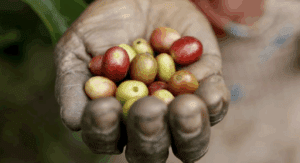 The definition of Gastronomy in most cases is the art of selecting, preparing, serving, and enjoying fine food. In order to adopt the definition to today’s times, I added at the end : “ That satisfies all our senses”. The etymology of the word gastronomy comes from Ancient Greek words:
The definition of Gastronomy in most cases is the art of selecting, preparing, serving, and enjoying fine food. In order to adopt the definition to today’s times, I added at the end : “ That satisfies all our senses”. The etymology of the word gastronomy comes from Ancient Greek words:
- γαστήρ (gastēr) meaning stomach or belly, and
- νόμος (nomos) meaning law, rule, or custom.
So, gastronomy (γαστρονομία in Greek) literally translates to “the law or art of the stomach” — in essence, the knowledge or study of food, cooking, and the relationship between culture and cuisine. My definition of Gastronomy goes beyond just cooking; it includes the history, science and aesthetics of food in combination with beverages and consumption of wine.
On the other hand, sustainability in a commonly accepted definition from the 1987 Brundtland Report by the World Commission on Environment and Development (WCED):
“Sustainable development is development that meets the needs of the present without compromising the ability of future generations to meet their own needs.” (WCED, 1987, “Our Common Future”)
Advertisements

In recent years, sustainability in gastronomy has emerged as a powerful tool for promoting environmental responsibility, supporting local communities, and encouraging ethical food practices. As chefs, restaurateurs, hoteliers, and food enthusiasts alike increasingly embrace eco-friendly practices, these industries play a pivotal role in addressing global challenges such as climate change, food insecurity, and biodiversity loss.
Gastronomy sustainability involves making conscious choices and decisions at every stage of the production and food supply chain and service process, from sourcing ingredients to food preparation, and waste management, to ensure that practices are both environmentally and socially responsible.
There are many reasons why we need to look at sustainable ways in farming, producing, cooking and food waste because the future is uncertain. According to the United Nations, the world population will reach approximately 9.7 billion in 2050 , therefor in order to feed those people the world will need:
- 50 % more food supplies
- 40 % more freight transport
In order to have enough food to feed people we need to take action now. There are many ways to do so, therefor you can see below some of the actions that companies can take in order to solve the problem of food scarcity:
Local and Seasonal Sourcing: By prioritizing locally grown and seasonal ingredients, restaurants and hotels can reduce carbon emissions associated with long-distance transportation and support regional agriculture. Local produce are fresher and tastier, brings money to the local community, preserves genetic diversity and builds community bonds among other reasons. Establishing partnerships with local producers to source fresh, organic ingredients and sustainable materials are crucial in the local communities. You can watch a great documentary here about Local Food.
Food Waste Reduction: Implementing practices that can help cut waste, such as portion control and personalization, head to tail cookery, food sharing and donations, ugly fruit and vegetable cookery and waste cooking and off course the last option is composting. A great documentary about food waste – Wasted! The Story of Food Waste was curated by the late Antony Bourdain and you can watch it HERE
Resource Waste Reduction: Utilizing energy conservation by creating low energy menus or even omophagia – the eating of raw food – menus, use of efficient appliances that use less electricity and installing led lighting. For water waste management practices like using water efficient dishwashing machines and collecting rainwater can have positive impacts to the environment.
Ethical and Sustainable Sourcing: Ensuring that ingredients and resources are sourced responsibly, with regard to animal welfare, fair trade practices, and environmental protection. This can also include hydroponics and urban gardens. Traceability and trust are important when sourcing fresh produce and lastly utilizing seasonal ingredients in the menu all year around.
Plant-Based and Alternative Proteins: There is a big debate if a plant-based steak should be called a steak but encouraging the use of plant-based proteins, 3D printed proteins or meat made in labs can reduce the environmental footprint of animal-based food production. There are also alternative proteins like insects and jelly fish that have a minimal impact in the environment.
Customer Engagement and Education: Creating awareness campaigns and promotional material through online media (not a sustainable idea for printed material) to educate patrons and guests about sustainable dining practices and ecofriendly options available.
There is a big movement towards gastronomy sustainability and despite the growing awareness of sustainable practices there are many challenges to be faced. Cost barriers, lack of awareness, and logistical issues related to sourcing sustainable ingredients and resources can delay or eliminate efforts. Additionally, balancing costing and profitability with eco-friendly practices poses a significant financial challenge for many businesses.
The journey toward gastronomy sustainability is an ongoing process that requires innovation, commitment, and collaboration across the producers, distributors, culinary professionals and consumers. The future of gastronomy is not just about flavors—it is about responsibility and accountability for the future. As chefs, producers, and consumers embrace sustainability, restaurant kitchens can become powerful agents of change. From farm to table, every choice matters. By honoring tradition, reducing waste, and sourcing ethically, a new food culture can be crafted that nourishes both people and the planet. The recipe for a better future starts on our plates and the choices we make.
Yes, there is an International Sustainable Gastronomy Day and is on June 18th 2025.
